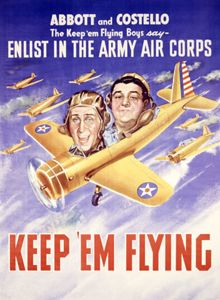
By George Benson
This peanut sized 13-inch model of the Pfalz Canard Torpedo Carrier is an extremely rare model, as documentation is scarce and only one prototype was built towards the end of WW1 by Pfalz Flugzeugwerke G.m.b.H., at their works in Speyer-on-Rhine.
The objective of the design was to have a torpedo carrying plane to attack British ships by flying low over the English Channel and spotting ships. The canard carried armour plating in the center section of the wing as the pilot was vulnerable to attack from a higher flying fighter. The lonely rear gunner was intended to deter attack further.
Only limited flight testing was carried out; the plane was grossly overloaded with a torpedo carried below the fuselage, which changed the C of G when launched in limited tests. In addition, the engine was an experimental early Junkers, based on a rather primitive "aero oil engine using spark ignition." The combination of excess weight, changing C of G, and inadequate power, plus the impending end of WW1, understandably caused the project to be abandoned.
Incidentally, attentive readers will be interested to note the pronunciation of "PFALZ" is identical to "FALSE."

Some further information relating to this peanut model is that it is indeed "FALSE" as there was no such an aircraft, merely from my active mind when I scrapped a peanut Drziewicki pusher canard from plans by Benno G. Sabel, but the fuselage was in reasonably good shape so eventually I thought about rebuilding it or in some way utilizing the body. This musing led to the development of this "PFALZ."
I reversed the body, making it a tractor, glued two North Pacific 4-inch props together, sketched out all flying surfaces with straight wood, and as the project was underway decided to give it an old time appeal, hence the scalloped trailing edge and pseudo-Germanic decorations. The canard is attached by rubber bands which minimizes breakage if impacting the wall in the gym, which was a problem with the Drzewiecki with a delicate canard attached rigidly to the body.
 The peanut flies remarkably well, flies stably, circles well, being fairly heavy at 18.1 grams, with a 13-inch loop of rubber about 5/32". Wing chord is 3-1/4" and canard is 9" x 2-1/2". Motor peg is at the very end of the fuselage. Airfoil section is "looks about right."
The peanut flies remarkably well, flies stably, circles well, being fairly heavy at 18.1 grams, with a 13-inch loop of rubber about 5/32". Wing chord is 3-1/4" and canard is 9" x 2-1/2". Motor peg is at the very end of the fuselage. Airfoil section is "looks about right."
I have flown it outdoors and it is remarkably stable but then I have to re-trim it and change the rubber for indoors, so I have decided to fly only in the gym and consider building a larger one (about 30-inch) for outdoor fun flying.

Some further information relating to this peanut model is that it is indeed "FALSE" as there was no such an aircraft, merely from my active mind when I scrapped a peanut Drziewicki pusher canard from plans by Benno G. Sabel, but the fuselage was in reasonably good shape so eventually I thought about rebuilding it or in some way utilizing the body. This musing led to the development of this "PFALZ."
I reversed the body, making it a tractor, glued two North Pacific 4-inch props together, sketched out all flying surfaces with straight wood, and as the project was underway decided to give it an old time appeal, hence the scalloped trailing edge and pseudo-Germanic decorations. The canard is attached by rubber bands which minimizes breakage if impacting the wall in the gym, which was a problem with the Drzewiecki with a delicate canard attached rigidly to the body.
 The peanut flies remarkably well, flies stably, circles well, being fairly heavy at 18.1 grams, with a 13-inch loop of rubber about 5/32". Wing chord is 3-1/4" and canard is 9" x 2-1/2". Motor peg is at the very end of the fuselage. Airfoil section is "looks about right."
The peanut flies remarkably well, flies stably, circles well, being fairly heavy at 18.1 grams, with a 13-inch loop of rubber about 5/32". Wing chord is 3-1/4" and canard is 9" x 2-1/2". Motor peg is at the very end of the fuselage. Airfoil section is "looks about right."I have flown it outdoors and it is remarkably stable but then I have to re-trim it and change the rubber for indoors, so I have decided to fly only in the gym and consider building a larger one (about 30-inch) for outdoor fun flying.









No comments:
Post a Comment